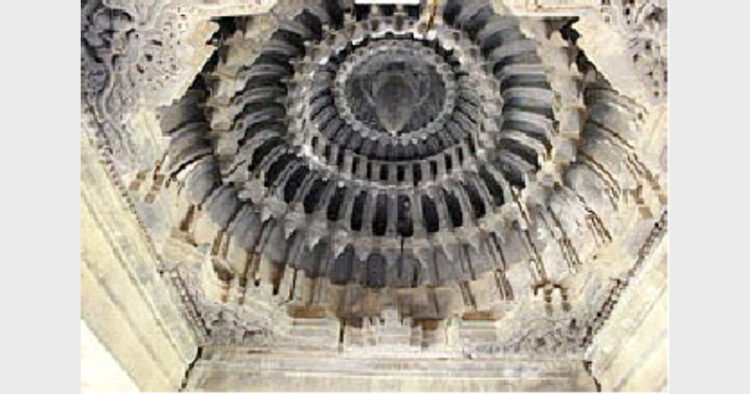Each of the temple carvings represented India’s rich cultural traditions. The Lotus flower, carvings of gods, goddesses and representations of spirits from folk myths, are often crowded together in a single sculpted panel, together with figures of elephants monsters, princes and nymphs
Temples were covered with ornamental carvings. The carvings many times were in abundance and all over the wall, the ceiling, entrance doors and shikhara. These carvings vary in design and detailing as per their location on the temple structure, time and place of construction, type of stone used for construction, as well as suitable to the deity to whom the temple is dedicated. Each of these carvings had their own symbolic meaning derived from one of the many different sources of India’s cultural traditions.
The Lotus flower, carvings of gods, goddesses and representations of spirits from earliest folk myths, are often crowded together in a single sculpted panel, together with figures of elephants monsters, princes and erotic nymphs. The entrance door frame was always carved very enterically with two dwarpals on either side and the idol of river Ganga and Yamuna were always on the two sides.
Methods and means of achieving the desired level of carving were many.
Carving on each stone was always a tedious and slow process, demanding patience on the part of craftsmen. A single wrong strike of the hammer would spoil thousands of hours of work. Carvings on the stones of a temple erected out of stone blocks were carried out in four parts. Firstly, the team of stone mason cut the stone block to the appropriate size, another team of carvers gave the stone a basic shape and finally the sculptors gave them the final form. The joining The system of each stone was pre-decided and the rough joinery details were prepared simultaneously. Later, during the time of assembly according to the requirement these details were made fine and corrected to make a proper joint.
The intricate ornate carvings on the stones depend on the precise drawings. In the earlier days the drawings on the stones were made by sharpened coal pieces and sharpened bamboo shoots (bamboo pencil). Stencils were made for the repetitive designs. The bamboo pencils were dipped in any coloring agent such as lime, ink, red oxide for the markings and sketches on the stones. The long straight lines were marked by soaking the thread in the colouring agent and then stretching them from one end to the other and snapped. After every phase of carving more lines were made for the carvers to detail the stones.













Comments